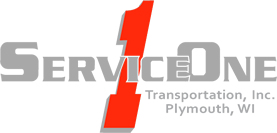Wisconsin 2019 Commercial Driver’s Manual
Click here to download the Wisconsin CDL Handbook 2019 – Updated August, 2018 by the Wisconsin Department of Transportation
There are thousands of job openings for truck drivers in Wisconsin, which makes it an ideal time to get your Commercial Driver’s License (CDL). If you are planning on taking your CDL exam, there’s nothing more stressful than walking into a test and not being prepared. Fortunately, as long as you study what your CDL instructor teaches and become very familiar with the the 2019 Wisconsin CDL Handbook, you can be in complete control over your CDL exam results. Since most all the CDL test questions are based on the information contained in this manual, studying it is part of insuring a passing score on your written exam.
CONTENTS OF THE WISCONSIN CDL HANDBOOK
- PRELIMINARY INFORMATION 5
- Wisconsin Information 5
- Federal Information 5
- What Should I Study in This Manual? 6
What CDL Do I Need? 7 - What are the CMV classifications? 7
- Who is exempt from CDL licensing in Wisconsin? 10
- What are endorsements? 11
- What is a CDL restriction? 11
- Social Security number requirement 12
- Proof of U.S. citizenship or legal status requirement 12
- What is interstate commerce? 12
- What is intrastate commerce? 12
Commercial Learner Permit (CLP) 12 - Skills testing 13
- School bus “S” endorsement 14
- Hazardous materials “H” endorsement 15
- Farm service CDL 16
- Commercial Driver License Medical Requirements 17
- Who was grandfathered from federal medical standards? 18
- Who is exempt from federal medical standards? 18
- Federal medical standards frequently asked questions 19
- Warnings and Penalties 21
- Identifying Human Trafficking 22
- PART ONE 23 SECTION 1: INTRODUCTION 23
- 1.1 Commercial Driver License Tests 23
- 1.2 Medical Documentation Requirements 25
- 1.3 CDL Disqualifications 27
- 1.4 Other CDL Rules 27
- SECTION 2: DRIVING SAFELY 29
- 2.1 Vehicle Inspection 29
- 2.2 Basic Control of Your Vehicle 39
- 2.3 Shifting Gears 41
- 2.4 Seeing 43
- 2.5 Communicating 45
- 2.6 Controlling Speed 47
- 2.7 Managing Space 51
- 2.8 Seeing Hazards 58
- 2.9 Distracted Driving 62
- 2.10 Aggressive Drivers/Road Rage 66
- 2.11 Driving at Night 67
- 2.12 Driving in Fog 72
- 2.13 Driving in Winter 72
- 2.14 Driving in Very Hot Weather 74
- 2.15 Railroad-Highway Crossings 76
- 2.16 Mountain Driving 79
- 2.17 Driving Emergencies 81
- 2.18 Antilock Braking
- Systems (ABS) 84
- 2.19 Skid Control and Recovery 86
- 2.20 Crash Procedures 88
- 2.21 Fires 89
- COVER 2 CONTENTS
- 2.22 Staying Alert and Fit to Drive 91
- 2.23 Hazardous Materials
- Rules for All Commercial Drivers 94
- SECTION 3: TRANSPORTING CARGO SAFELY 98
- 3.1 Inspecting Cargo 98
- 3.2 Weight and Balance 98
- 3.3 Securing Cargo 100
- 3.4 Cargo Needing Special Attention 101
- PART TWO 102 SECTION 4: TRANSPORTING PASSENGERS SAFELY 102
- 4.1 Vehicle Inspection 102
- 4.2 Loading and Trip Start 103
- 4.3 On the Road 104
- 4.4 After-Trip Vehicle Inspection 106
- 4.5 Prohibited Practices 106
- 4.6 Use of Brake-Door Interlocks 106
- SECTION 5: AIR BRAKES 107
- 5.1 The Parts of an Air Brake System 107
- 5.2 Dual Air Brakes 113
- 5.3 Inspecting Air Brake Systems 113
- 5.4 Using Air Brakes 116
- SECTION 6: COMBINATION VEHICLES 120
- 6.1 Driving Combination Vehicles Safely 120
- 6.2 Combination Vehicle Air Brakes 124
- 6.3 Antilock Brake Systems 127
- 6.4 Coupling and Uncoupling 128
- 6.5 Inspecting a Combination Vehicle 132
- SECTION 7: DOUBLES AND TRIPLES 135
- 7.1 Pulling Double/Triple Trailers 135
- 7.2 Coupling and Uncoupling 136
- 7.3 Inspecting Doubles and Triples 138
- 7.4 Doubles/Triples Air Brake Check 139
- SECTION 8: TANK VEHICLES 141
- 8.1 Inspecting Tank Vehicles 141
- 8.2 Driving Tank Vehicles 142
- 8.3 Safe Driving Rules 143
- SECTION 9: HAZARDOUS MATERIALS 145
- 9.1 The Intent of the Regulations 146
- 9.2 Hazardous Materials Transportation—Who Does What 147
- 9.3 Communication Rules 148
- 9.4 Loading and Unloading 159
- 9.5 Bulk Packaging Marking, Loading and Unloading 162
- 9.6 Driving and Parking Rules 164
- 9.7 Hazardous Materials—Emergencies 167
- 9.8 Hazardous Materials Glossary 172
- SECTION 10: SCHOOL BUSES 176
- Wisconsin License Requirements 176
- General School Bus Rules 177
- 10.1 Danger Zones and Use of Mirrors 177
- 10.2 Loading and Unloading 180
- 10.3 Emergency Exit and Evacuation 186
- 10.4 Railroad-Highway Crossings 189
- 10.5 Student Management 192
- 10.6 Antilock Braking Systems 193
- 10.7 Special Safety Considerations 194
- Vehicle Inspection for School Bus 196
- PART THREE 197 SECTION 11: VEHICLE INSPECTION TEST 197
- 11.1 All Vehicles 197
- 11.2 External Inspection
- (All Vehicles) 200
- 11.3 School Bus Only 204
- 11.4 Trailer 205
- 11.5 Coach/Transit Bus 206
- 11.6 Taking the CDL Vehicle Inspection Test 207
- CDL Vehicle Inspection Memory Aid 208
- SECTION 12: BASIC TEXT CONTROL SKILLS TEST 210
- 12.1 Scoring 210
- 12.2 Exercises 211
- SECTION 13: ON ROAD DRIVING TEST 212
- 13.1 How You Will Be Tested 212
